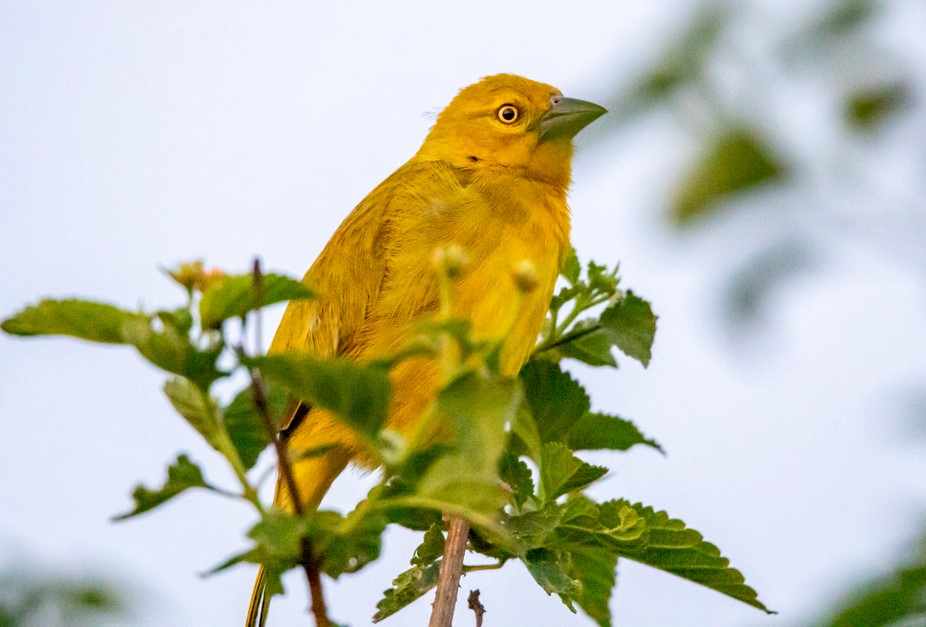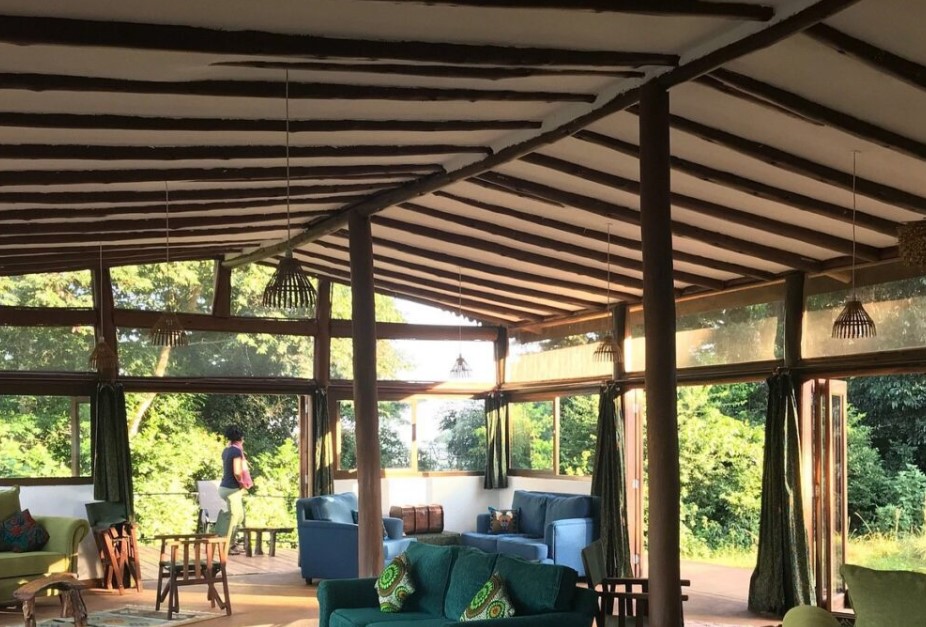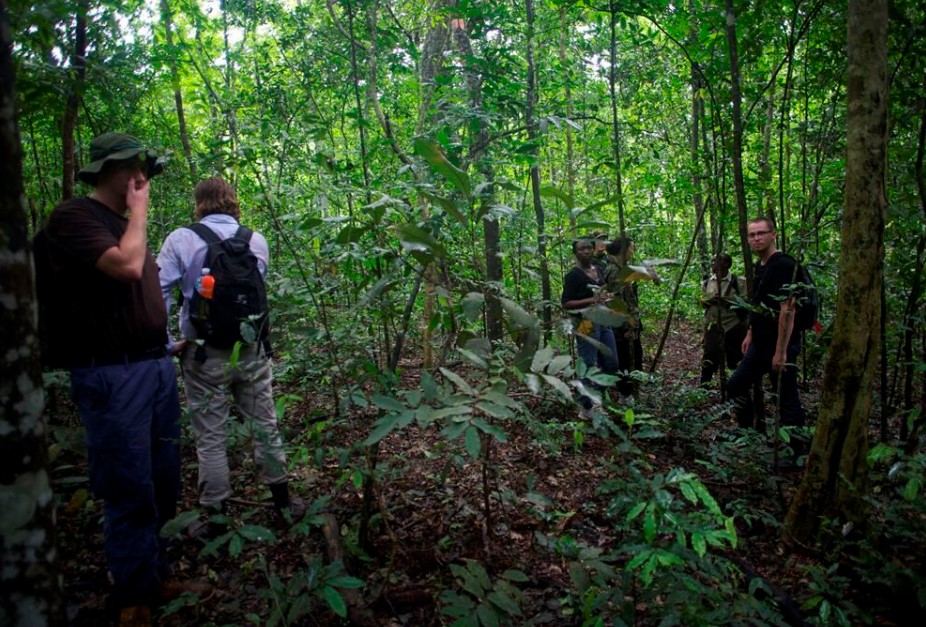
Birdwatching in Lake Mburo
Lake Mburo National Park is Uganda’s smallest savannah park, covering an area of 370 km2, and a great place for birding safaris. With its breathtaking lakes, forests, and savannahs, it is home to more than 332 bird species, especially those that live in acacias. Being the only national park in Uganda that is part of the Zambezian Biome, it provides a distinctive opportunity for birdwatchers. Birdwatching in Lake Mburo attracts tourists through out the year to see rare species including the Shoebill Stork and the Red-faced Barbet, which are unique to this area, are visible to visitors. Areas surrounding Lake Mburo, the Rubanga forest, the Warukiri and Miriti marshes, and adjacent salt licks are important locations for birdwatching.
Bird species in Lake Mburo National Park
African Wattled Lapwing- Birdwatching in Lake Mburo
The African wattled lapwing is a large bird found in marshes, fields, and burnt areas. It has a brown body, black crown, white forehead, and large yellow facial wattles with red bases. This bird has long yellow legs and often walks slowly or freezes with one leg raised. Its diet mainly includes seeds and insects like crickets and grasshoppers. They are usually spotted in pairs or small groups during nature walks around Lake Mburo National Park and wetlands.
Red-Chested Sunbird
A red-chested sunbird is a slim, beautiful bird in the Nectariniidae family. Males are black and green with a red band and long tail feathers, while females are grey-brown above and pale below with dark markings. They are often confused with other sunbirds but differ in belly color and markings. These birds live in various habitats like wetlands and gardens and can be seen in Lake Mburo NP during nature walks to salt licks.
Shoebill Stork
The Shoebill Stork is a unique large bird and a top highlight on a Ugandan birding safari, known for its shoe-shaped bill and standing about 4.5 feet tall, weighing over 7 kg and has grey feathers. This highly threatened bird species is commonly seen in the Miriti and Warukiri Swamps, where it lives in the marshes, especially in the golden grasses and reeds. Besides Lake Mburo National Park, this bird species can also be spotted on a birding safari to the Mabamba wetland as a top highlight of the day.
African Finfoot
The African finfoot is a colorful, duck-like bird with a bright orange bill and legs. Male finfoots have a grey throat, while females have a white throat. They live near water and possess lobed feet, a long neck, and a sharp beak. Their plumage is usually pale underneath. The finfoot can climb trees and shows behaviors similar to other water birds. It can be seen in the Rubanga forest during escorted nature walks.
Grey Crowned Crane
African Grey Crowned Cranes are large, long-legged birds known for their distinct features like long necks, straight bills, and an elevated hind toe. They have colorful markings, including pink, red, and white cheek patches, and a golden crown on their heads. Standing about 1 meter tall and weighing 3 to 4 kg, they are Uganda’s national bird. They live in wetlands, feed in pairs or flocks, roost in trees, and their chicks are precocial as they can run soon after hatching.
African Fish Eagle
The African fish eagle, or African sea eagle, is a large bird found in sub-Saharan Africa near open waters. It has strong talons and rough soles for catching fish and also eats waterbirds. This eagle has a brown body, white head, and large black wings, with females typically larger than males. They live 16 to 24 years in the wild and have unique yellow feet and a hook-shaped beak. Its cry symbolizes the spirit of Africa and it can often be seen around Lake Mburo.
Papyrus Gonolek-Birdwatching in Lake Mburo
The Papyrus Gonolek is a rare bird found in Uganda’s papyrus swamps, especially at Lake Mburo and Mabamba wetlands. It is about 18 cm long, with a yellow crown, black upperparts, and bright orange crimson on its breast. The bird is known for its unique calls and is often spotted during birding tours.
Martial Eagle
The martial eagle is a powerful predator known for its strong hunting abilities and is the largest eagle in Africa, weighing about 4.17 kg. Its name means “war-like,” showing its bold nature. This endangered species lives in sub-Saharan Africa across areas with plenty of food and space. The eagle has dark brown feathers on its back and a lighter underbelly with brown blotches. It often hunts alone or in pairs in open plains, preying on vertebrates like rats and birds. Its excellent eyesight allows it to spot prey from 6 km away.
The Ross’s Turaco- Birdwatching in Lake Mburo
Ross’s Turaco is the second largest Turaco, measuring 51 to 54 cm and weighing 390 to 444 grams. It lives in woodlands like Rubanga Forest. Both male and female birds incubate eggs. They are unique for having true red and green colors. These social birds have flexible toes and vibrant feathers, with a purple body, yellow face, and red crest.
Double-Toothed Barbet
The double-toothed barbet is one of the bird species in Lake Mburo usually found near fig trees in habitats like woodlands and gardens. They live in pairs or small groups, mainly eating fruits and insects such as winged ants and termites. This plump bird has striking black and red colors, a large head, and a long neck, with a notable ivory-colored bill and yellow skin around the eyes.
Yellow-throated Tinker Bird
The Yellow-Throated Tinkerbird is a common bird found in Uganda, part of the African barbet family. It has a plump body, a large head, and a heavy bill. Typically solitary, it lives in forests and has higher-pitched calls near the coast. With a yellow throat, pale underparts, and black upperparts, it can be confused with similar species. It can be seen in the Rubanga forest.
Red-Faced Barbet
A red-faced barbet is a colorful African bird known for its bright red face and eye markings, with a black body and yellow-streaked wings. It measures about 17 cm and lives in Burundi, Rwanda, Northwest Tanzania, and Southwest Uganda, favoring dry and moist savanna habitats. The bird is at risk due to habitat loss and often appears in pairs or small groups. It resembles the black-billed barbet but lacks red on its throat.
Piapiac- Birdwatching in Lake Mburo
The piapiac is a striking African bird in the crow family and the only one in its genus, Ptilostomus. It has a long tail and a sturdy bill. Adult piapiacs have shiny black feathers, while juveniles have pink bills with black tips. They are found in open savannas, cultivated areas, and rural villages. Piapiacs often gather in groups and can be seen riding on the backs of mammals or resting in trees. They are commonly spotted near buffalo herds at Lake Mburo National Park, particularly during the dry season.
Bare-Faced Go-Away-Bird
The bare-faced go-away bird is a striking bird in the Musophagidae family, known for its distinctive bare black face. It has a bushy crest, a white head, and a grey body. This bird typically lives in moist savannas, woodlands, and shrubs, often in small groups, at elevations between 500 m and 2,200 m, primarily 1,000‒2,000 m. The name “Go-away” comes from its alarm call, which sounds like “G’way!” Unlike similar species, it has a grey-and-white appearance, a bare black face for eating fruit, and specific features that set it apart. The bird can often be seen during nature walks near salt licks.
White-headed Barbet
The White-headed Barbet is one of the bird species in Lake Mburo, its a medium-sized, colorful bird with black-and-white features. Its tail can be black or white, wings can be black or white-spotted, and underparts may be all white or black with white streaks. It is often found in fig trees and woodlands, usually in groups.
Tropical Boubou
The tropical boubou, also known as the bell shrike, is a medium-sized black-and-white bush shrike. Its underparts are white, and it has glossy blue-black upper parts and a tail, with a white wing stripe. Look for it on nature walks near the salt licks.
Best time to visit the Park
During the dry season from January, February, June, and July are the best months for birdwatching at Lake Mburo due to good road conditions and less rain. Migratory birds come in November and leave by April. Wildlife is easy to see during the dry seasons, especially near water sources.







